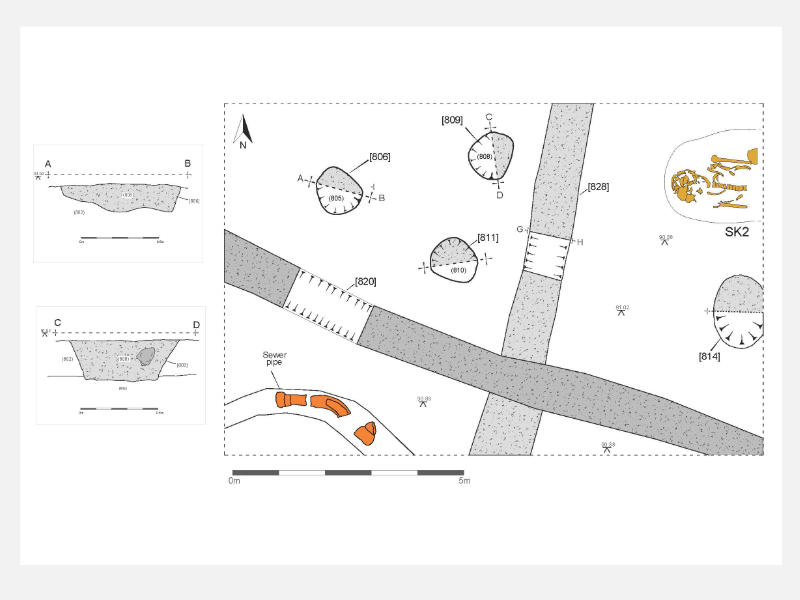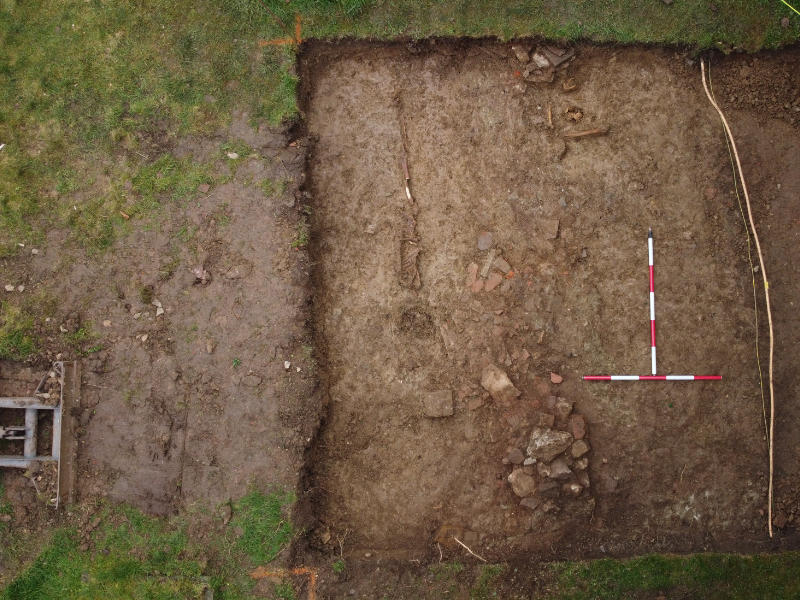Archaeological Excavation
What is the purpose of an archaeological excavation?
An archaeological excavation will be required when it is known that archaeological remains survive in the ground that will be disturbed or destroyed by the development. The purpose is to record the archaeology by record so that, although it will no longer survive in the ground, plans, photographs and descriptions will be preserved for future generations.

What is required to set up an archaeological excavation?
The first stage is to produce a Written Scheme of Investigation and submit it to the Local Authority (LPA) for approval. Once approval is given, mobilisation includes production of a Risk Assessment Method Statement, ordering plant, fencing if required and (depending on the duration of the evaluation) welfare facilities. The client will be asked to provide details of access to the site and any known hazards.
How does an archaeological excavation work?
The process of excavation requires the known archaeology to be revealed by removal of topsoil and subsoil and then sampled. Generally, the overlying layers (topsoil and subsoil) will be removed by mechanical excavator, stored, and carefully supervised by the archaeologist. The machinery can be subcontracted or supplied by the client.
Once the archaeology has been uncovered, it will be planned using GPS survey equipment and then sections will be dug through archaeological features using hand tools such as mattocks, shovels and trowels. Detailed records will be made, photographs taken, pottery, animal bones or other artefacts will be collected and soil samples taken.
What happens after the fieldwork?
Generally once the excavation is complete and has been ‘signed off’ by the LPA, the development can continue. For the archaeologists a post excavation stage starts in which the records, artefacts and soil samples etc are analysed. This can take a few weeks as some of this work will be undertaken by external specialists. This work culminates in a report to be submitted to and approved by the LPA, at which point the condition is discharged

Talk to us about your project
Call Elizabeth or Tom on 01568 780 918 or send us a message via our contact form below. We look forward to talking with you.
Frequently Asked Questions
Why do I have to pay for archaeology and how much does it cost?
Archaeological works have been a part of planning law since 1990. The purpose of archaeological works is to ensure that these irreplaceable remains are not lost to development. Over the last 33 years, thousands of archaeological sites have been recorded ahead of...
What happens if you find human remains?
It is unusual to encounter unexpected human remains in the course of archaeological work, but if this happened best practice guidance would be followed. The remains would initially be left in situ, covered and protected and the local Coroner would have to be informed....
What happens if you find treasure?
It’s very rare to find artefacts of any monetary value on archaeological sites but in the event that any artefacts are encountered that would constitute ‘treasure’ (as defined by The Treasure Act, 1996) Ambrey Archaeology would be obliged to report the find to the...
What happens if you find a Roman villa?
Prior to carrying out archaeological evaluations and watching briefs, the likelihood of encountering a villa or something equivalent is considered, sometimes with the use of a desk based assessment or geophysical survey, with the purpose of avoiding this outcome....
